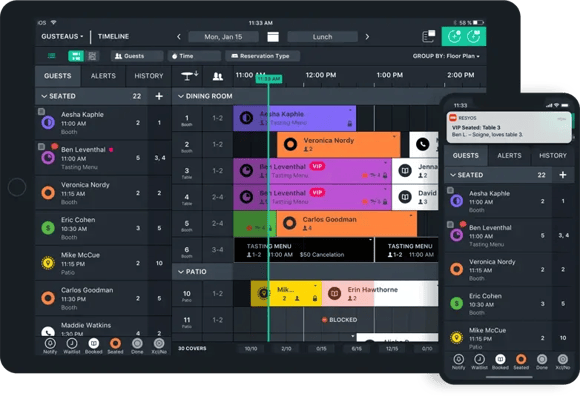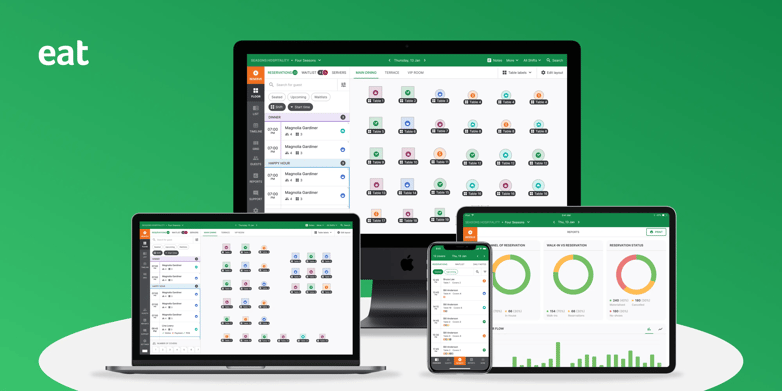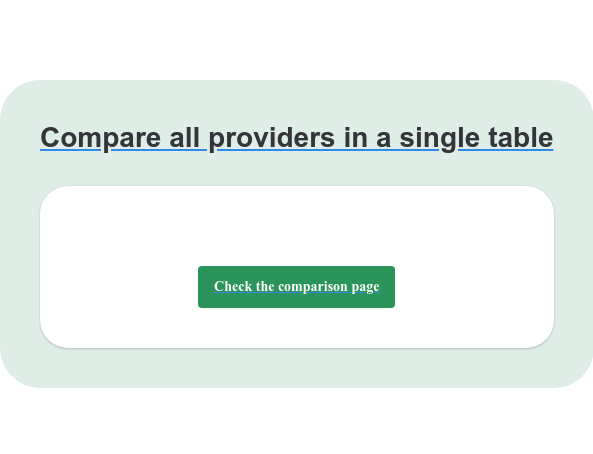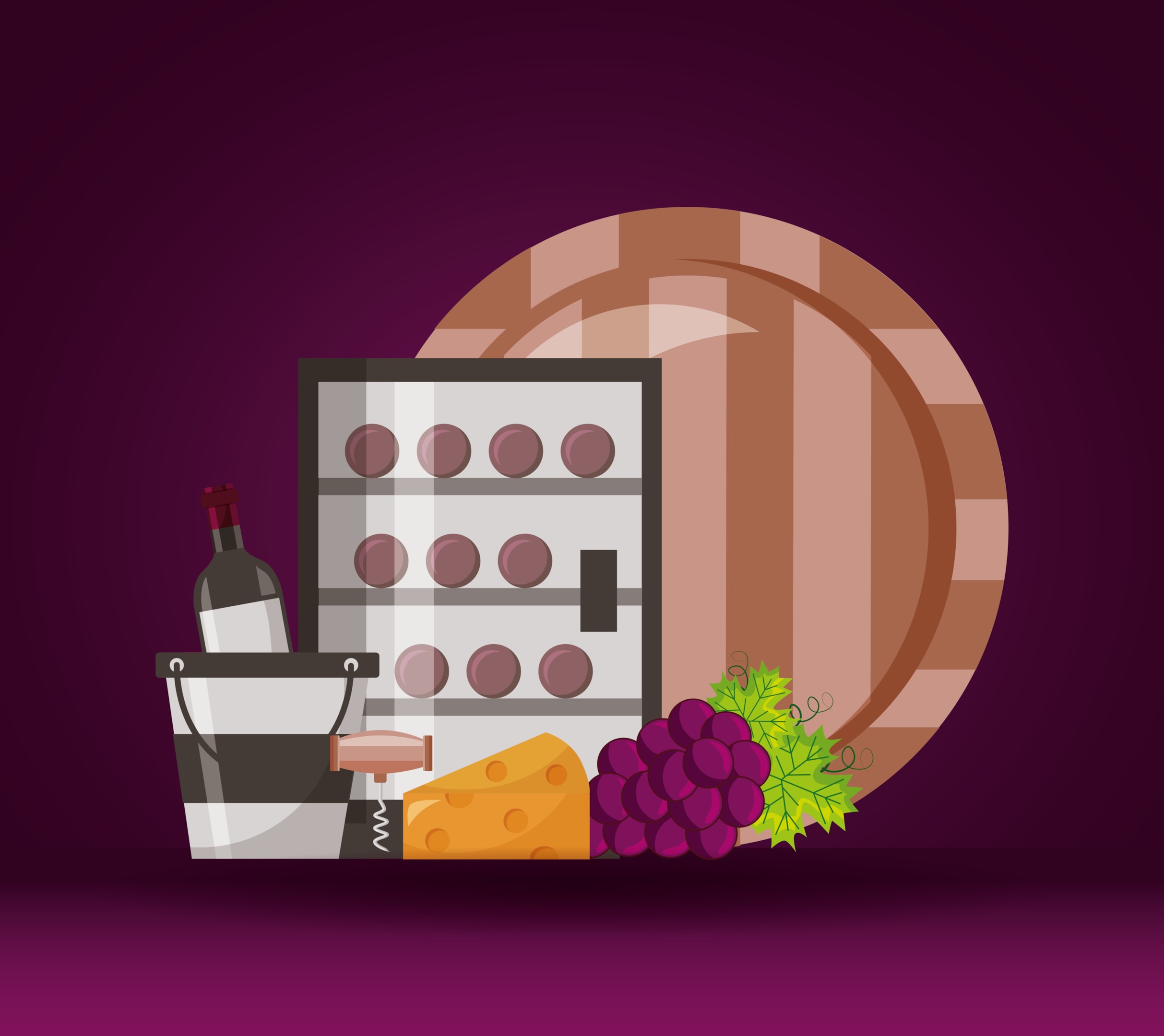When it comes to choosing an online restaurant reservation system, there are many options to choose from for your restaurant.
Reservation systems can also help manage the financial aspects of dining, including the total bill and payment options.
To make things easier for you, we’re going to compare, in-depth, two of the major US reservation system providers, OpenTable and Resy with the aim of helping you make an informed decision.
We’ll also look at some alternative options you might want to consider.
| OpenTable | Resy | |
|---|---|---|
| Commission-free online reservations | ||
| Own your customer data | ||
| FB, IG & Google Integrations | ||
| Reservation management | ||
| Table management | ||
| Pre-payments and deposits | ||
| Guest CRM | ||
| Analytics & reports | ||
| Customizable messaging | ||
| Marketing automation | Only in $499 tier | |
| Operations automation | Only in $499 tier | |
| Live chat support | ||
| Cost/month | $249+ fees | $399 |
Introduction to OpenTable vs Resy
OpenTable and Resy are software companies that sell both reservation and table management systems to restaurants. These types of systems help restaurants manage their reservations, keep track of guests and manage their floor plan during service hours as guests arrive.
As they deal with reservation management both these companies focus on the full-service end of the restaurant market.
.webp?width=580&height=384&name=ios%20(1).webp)
OpenTable overview
Founded in the late 1990s, OpenTable is currently one of the largest reservation software providers in the world. According to their website, 10 covers are processed on their network every second. This adds up to around 25 million customers a month.
OpenTable operates both as a consumer reservation platform at opentable.com and also as a table management system for restaurants. These two systems synch together as a central place to manage bookings.
OpenTable’s main pitch is they provide a marketing channel for restaurants. They do this by delivering more ‘incremental’ bookings for restaurants through their diner network (opentable.com) and charging a large per-cover fee to restaurants if they want access to that network.
In some circles, this strategy has been controversial since one of the main ways the company attracts diners to opentable.com is through what’s known as ‘click arbitrage’ on Google Adwords. Essentially they buy search ads through Google’s ad platform using keywords of individual restaurants in any given city. The cost they pay for the clicks on Google is usually much less than the per cover fee they charge restaurants, and thus, they keep the difference between the two.
On the surface, there is nothing wrong with doing this, but detractors of this approach say that OpenTable is stealing the customers who are looking for the restaurant anyway. So the bookings they provide are ultimately not ‘incremental’. In addition, some restaurants have complained that if OpenTable provides the booking, restaurants don’t get an opportunity to establish a long-term relationship with that guest, even though they were already looking for that restaurant online.
On the table management software side, OpenTable was an established company in the US market with very few competitors. This meant that innovation was slow. In the last five + years, however, competitors have sprung up, offering better, faster, and more portable table management systems. The result is that in the last few years, OpenTable has started to play catch-up in terms of releasing new features. This shift has been in connection with the eligibility and benefits of more advanced reservation systems.
Pivot to an advertising network
Today, OpenTable has moved in the direction of transforming opentable.com into a more ad-focused restaurant aggregator. OpenTable is owned by Booking Holdings, which operates booking.com and kayak.com amongst others, and opentable.com appears to be moving away from the diner network approach towards more of a 'booking.com for restaurants' approach.
In this new opentable.com world, restaurants have the opportunity to buy 'promoted' positions in the listings (see below), as well as pay for higher positions in the lists of 'featured restaurants'.

This approach will allow restaurants with deep pockets, i.e. restaurant groups and large established businesses to gain the most visibility on opentable.com and restaurants should expect to pay an increasing amount in ad costs to continue to use OpenTable as an effective marketing channel.
Products
OpenTable's table management and reservation solutions are available through a three-tiered product starting from a basic package to a full-stack table management system.
What features do restaurants get with OpenTable Guest Center?
- Customizable floor plan
- Table & Waitlist management
- Shift management and reporting
- Reservation and guests performance reports
- Waitlist management
- POS & Payment integration
- CRM & Guest Management tools
- Takeout support
- Online booking widgets
- Guest surveys
OpenTable pricing
The pricing of OpenTable's table management and reservation system comes in three-tiers and includes a monthly subscription fee and a per cover charge which differs based on the source of the booking. OpenTable charges a $1-1.5 per cover fee for bookings made through their network and $0.25 per cover fee for bookings made through the restaurant's widget.
Note: If you link the reservation button on your website to your opentable.com profile you will pay $1.50 per cover. In order to pay $0.25 you must use the OpenTable booking widget. Make sure you are implementing this properly to not be overcharged!
Pricing for OpenTable's table management system:
- Basic (online reservations through OpenTable's network): $39/month + $1.50/network cover & 0.25/booking widget cover
- Core (Basic table management and waitlist features): $249/month + $1/network cover
- Basic (All basic & core features + relationship management): $449/month + $1/network cover
Advantages of OpenTable
- Increased exposure through opentable.com, with access to large pool diners.
- Helpful reservation and guest management feature for staying organized and managing guests.
- Diner loyalty system you can leverage as a marketing channel.
Disadvantages of OpenTable
- OpenTable's per-cover charges can quickly mount up.
You can estimate how much it'll cost you to run OpenTable by looking at your own reservation numbers.
Here is an example of a restaurant that generates just a small amount of covers online.
At 200 web covers and 100 from opentable.com, a restaurant would be spending $6500 a year.
For large and/or very busy restaurants that do well on opentable.com, we've seen invoices as high as $10,000+ per year.
- The release of the new ad-focused opentable.com website will see costs rise even more.
- Competitors restaurants have an easy way of advertising against your restaurant.
- The potential issue with OpenTable using Google Adwords to take organic clicks away from restaurants.
- With OpenTable, you do not "own the customer". This means they have control of the customer relationship and use that user data to drive more engagement for themselves. Owning the customer relationship and building a private customer database that you control is the heart of growing any business. OpenTable doesn't support restaurants in this way.
- There's high competition on their consumer-facing app due to the sheer volume of restaurants listed.

Resy overview
Like OpenTable, Resy is a table management and restaurant reservation system with a consumer-facing reservation platform. Resy - even though they’re smaller - is more popular in New York and in other cities on the East Coast.
Since its founding, Resy has changed its approach to how it provides reservation technology to restaurants. Originally Resy sought to provide restaurants with a way of selling tables at a premium during peak times - think Uber’s surge pricing but for restaurants - by charging diners a fee to book. Resy enhances the dinner experience by providing easy access to dinner reservations at trendy locations.
This proved to be an unworkable business model so Resy has subsequently moved closer to something resembling OpenTable. Restaurants get access to resy.com, a consumer booking platform, as well as restaurant software that connects to resy.com to manage bookings.
Some think of resy.com as the ‘new OpenTable’ but they approach reservation fees in a different way. Unlike OpenTable, Resy pitches itself as having no per-cover fees for access to its booking platform. However, Resy does offer features that restaurants can pay for that can boost conversion rates within their platform.
Resy is also known to follow a Business-to-consumer model. For example, they connect diners with their favorite restaurant with them recently becoming more accessible than just upscale and renowned restaurants. Diners can now find their new favorite neighborhood restaurant by searching the Resy database, which will include restaurants that want to be added to the map.
Resy and American Express have also joined forces to provide customers with Global Dining Access with “special reservations”. Restaurants can advertise their special events to American Express members and get access to the American Express network. Customers have access to handpicked content, exclusive bookings, and exclusive restaurant seating arrangements.
What features do restaurants get with Resy?
- Reservation and table management system for managing guests and table
- Waitlist management
- AMEX partnerships and POS integration
- Marketing and communication features
- Customizable floor plan
- Restaurant analytics and reporting
- Takeout & contactless dining support
- Guest surveys
- Capacity management
- Mobile Waitlist
- Ticketed events and experiences
Resy Pricing
Resy offers three pricing tiers for restaurants thinking about using their services. Each with access to different feature sets. If you want to get close to the full Resy experience you need to choose the Platform 360 option at $399/month.
Unlike OpenTable, Resy does not charge a per cover fee on any online reservations.
Their 3 tiers are:
- Platform: $249/month
- Platform 360: $399/month
- Full Stack: $899/month
Resy does not offer a free or lite version of their product, meaning that in order to get your restaurant on their network, you need to spend at least $249 a month.
Extra charges of Resy
The base pricing tiers of Resy seem well priced when compared to OpenTable but to get the full benefits of Resy there are optional add on features which come with a fee.
For example, their ticketing feature for events, comes with a transaction fee of up to 3%. POS integration costs and extra $100 month as well. Costs can quickly rise for the Resy system when you use all the features and in then the cost ends up not being that much cheaper than OpenTable.
Advantages of Resy
- Flat monthly pricing options
- Powerful features in additional to reservation and table management software.
- Two-way sms between you and your guests
- Claimed no-show rate of 3% when using the system
Disadvantages of Resy
- Resy can also be expensive. Whilst their cheapest pricing plan of $189 is much less than OpenTable, to get all the benefits from the system you'll end up spending between $500-$900 a month.
- You can't list your restaurant on their booking platform without using their reservation system.
- Their diner network is small
- Not much marketing support for restaurants
Integration and Support
Resy’s reservation system is designed to integrate seamlessly with a restaurant’s existing systems, making it easy to manage reservations and availability. The system also provides robust support, including a dedicated customer support team and a comprehensive knowledge base.
For example, if a restaurant needs help with setting up their Resy account or managing their reservations, they can access the knowledge base for step-by-step instructions. They can also contact the customer support team for personalized assistance. This level of support ensures that restaurants can get the most out of the system without any hiccups.
Moreover, Resy’s system is designed to be flexible and adaptable, making it easy to customize to meet the unique needs of each restaurant. The system also provides real-time analytics and insights, helping restaurants to optimize their reservation management and improve the overall dining experience. This integration and support framework ensures that restaurants can focus on what they do best – providing excellent service to their guests.
OpenTable and Resy alternative
What about alternatives? Eat App offers a different approach to OpenTable and Resy as well as providing restaurants with a cross-platform advanced table management solution.

Eat App overview
Cost-effective access to reservation networks
With the rise of social media, content, and community networks, and Google's dominance in search, dedicated booking platforms like OpenTable and Resy are becoming obsolete. Restaurants can focus on Google Business, their social media accounts, and other content websites as marketing channels and avoid altogether the high fees of booking platforms.
Simple pricing
Eat focuses on easy-to-understand pricing, so restaurants don't have to deal with confusing ad products, hidden fees, or additional add-ons.
Cross-platform technology
Resy and OpenTable require you to buy iPads in order to run their systems. Eat App runs on iPad apps, but also through web, iOS, and Android mobile devices, giving total flexibility to reservation management for restaurants.
Own the customer
Eat App embraces the idea that restaurants should own the guest experience. This ultimately is the way to provide the best hospitality. Featuring a strong privacy policy, Eat App won't sell or use restaurant data.
Next-Generation POS Integration
POS data sharing with the reservation system is a killer app for restaurants and is changing the way restaurants understand guests, operations, and marketing.
Both OpenTable and Resy offer POS integration, but few restaurants know that the type of integration they offer requires staff to manually enter IDs into the POS. This means that countless staff hours are wasted night after night just to maintain the data flow. Eat App has developed a unique, algorithmic-based solution that reduces the time spent by 95%, not to mention pairing that with their state-of-the-art restaurant automation suite to kick efficiency into high gear.
DIY Setup
To get started with OpenTable and Resy you need to contact them and speak with their sales team before being able to try out the system. This is an antiquated approach suitable for large enterprise clients. Restaurant owners need a solution they can use themselves without getting stuck in back-and-forth exchanges with sales members.
Compare more reservation software
- Yelp vs OpenTable
- Eat App vs Table Agent
- Tock vs OpenTable
- Eat App vs Tablein
- OpenTable Alternatives

Choosing the right reservation system
Choosing the right reservation system is crucial for restaurants, as it can have a significant impact on the user experience and the overall success of the business. When selecting a reservation system, restaurants should consider several factors, including ease of use, integration with existing systems, and customer support.
For example, a restaurant should look for a system that is easy to use and navigate, both for diners and staff. A user-friendly interface can make the reservation process smooth and efficient, reducing the chances of errors and enhancing the dining experience. They should also consider a system that integrates seamlessly with their existing systems, such as their point-of-sale system or website. This integration ensures that all aspects of the restaurant’s operations are in sync, providing a cohesive experience for both staff and diners.
Moreover, a restaurant should look for a system that provides robust customer support, including a dedicated customer support team and a comprehensive knowledge base. This support can be invaluable in resolving any issues quickly and efficiently. They should also consider a system that provides real-time analytics and insights, helping them to optimize their reservation management and improve the overall dining experience. By considering these factors, restaurants can choose a reservation system that meets their needs and enhances their operations.
Conclusion
In conclusion, a well-designed reservation system is essential for providing a seamless user experience in the dining room. Resy’s reservation system is designed to integrate seamlessly with a restaurant’s existing systems, making it easy to manage reservations and availability. The system also provides robust support, including a dedicated customer support team and a comprehensive knowledge base.
By choosing the right reservation system, restaurants can elevate the user experience, improve the overall success of their business, and provide a seamless experience for both diners and staff. Whether you’re a diner looking to book a table or a restaurant looking to manage your reservations, Resy’s reservation system is the perfect solution.
Frequently Ask Questions (FAQ)
Frequently Ask Questions
OpenTable typically charges a monthly subscription plus a per-cover fee for each booking made through its network. Resy offers flat monthly pricing tiers and generally avoids per-cover fees.
Resy gives restaurants more direct access and ownership of the guest relationship and data, whereas OpenTable’s model focuses more on its own diner network, which can limit direct guest-ownership by the restaurant.
Restaurants should evaluate factors including cost structure (subscription + per cover vs flat fee), guest-data ownership, marketing reach via the platform’s diner network, feature set (waitlists, POS integration, CRM) and how those align with their concept and business goals.















-1.png?width=1812&height=1072&name=TripAdvisor%20%26%20More%20Bookings%20(1)-1.png)
-2.png?width=1812&height=1072&name=Google%20Bookings%20(1)-2.png)


-1.png?width=200&name=TripAdvisor%20%26%20More%20Bookings%20(1)-1.png)
-2.png?width=200&name=Google%20Bookings%20(1)-2.png)
-1.png?width=200&name=Instagram%20Bookings%20(1)-1.png)
-1-png.webp?width=200&name=Facebook%20Integration%20Rectangle%20(1)-1-png.webp)







.webp?width=200&name=download%20(1).webp)
%20(1)-2.webp?width=200&name=Eat%20(34)%20(1)-2.webp)
%20(1)-2.webp?width=200&name=Eat%20(18)%20(1)-2.webp)




.webp?width=670&height=440&name=Chit%20Printer%20Banner%20(8).webp)





.webp?width=144&height=72&name=Eat%20App%20Logo%20(3).webp)